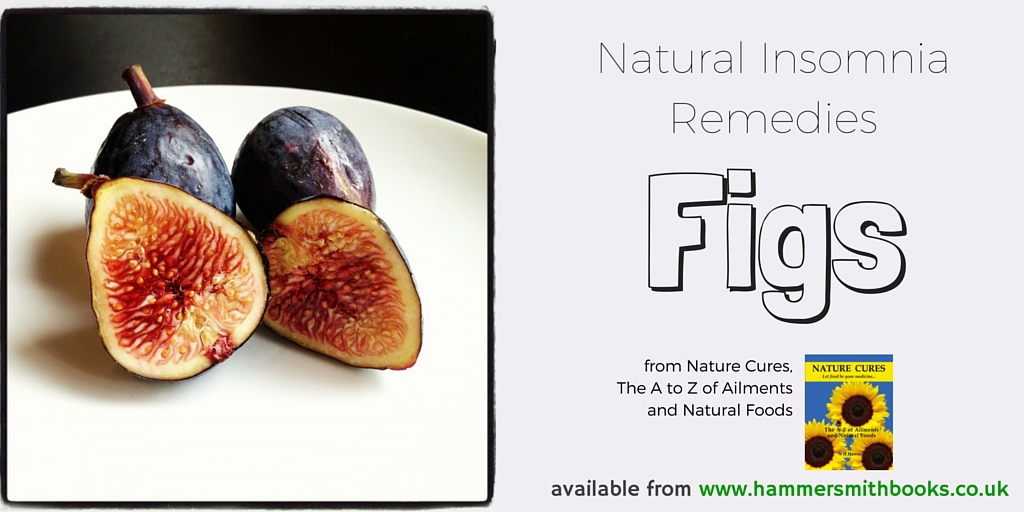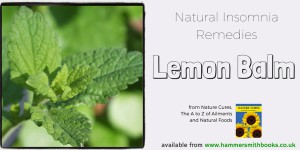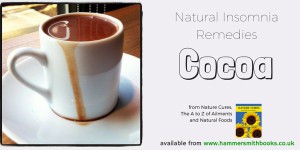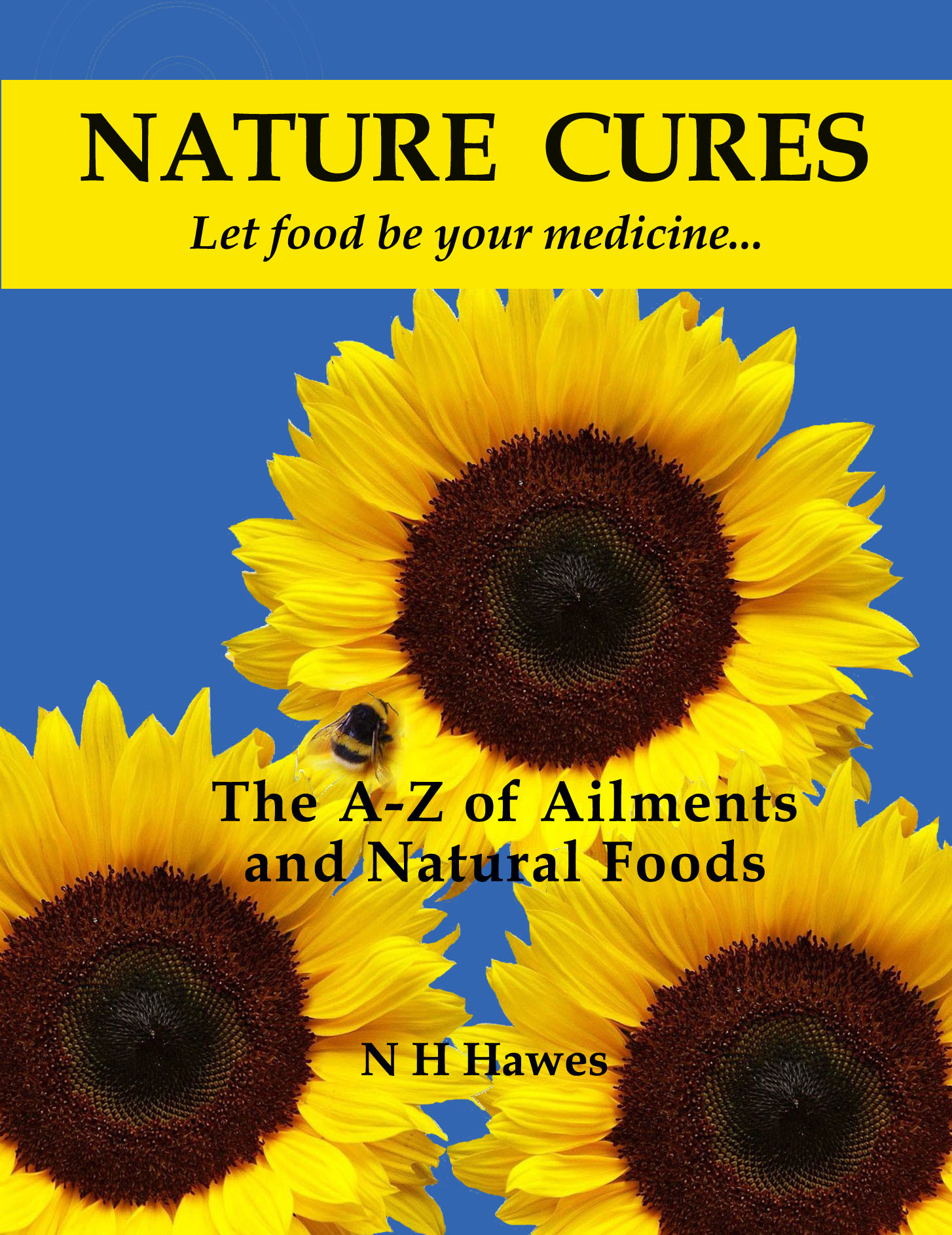
Few things are as important to health as getting good sleep so your body can rest and recover, and keep your mind strong for the new day. Insomnia is also a common symptom for many of our readers, whether they struggle with depression, eating disorders, Chronic Fatigue Syndrome or other auto-immune conditions.
So we wanted to share with you our favourite natural remedies to aid healthy sleep, taken from our latest release: Nature Cures, by Nat H Hawes. Nature Cures is an encyclopaedic guide to ailments, natural remedies, nutrients and health hazards to look out for (ebook now available) – perfect for anyone looking for a natural approach to optimum health.
Figs (Ficus Carica)
A fig tree is a small tree with a cylindrical stem. It is found all over India. Bo Tree Figs come from a large fig tree that grows in the southern parts of Asia. The tree is holy to Buddhists and is used ritually and medicinally. The bo tree’s figs contain the greatest amount of serotonin when compared to all other figs and are able to significantly inhibit epileptic seizures by increasing the amount of serotonin that nerve cells transmit.
Figs contain a derivative of benzaldehyde which has been reported to be highly effective at shrinking cancer tumours. Figs also contain vitamin A, vitamin B9, vitamin C and vitamin K, calcium, magnesium, manganese, potassium, sodium and zinc.
Figs are rich in potassium and fibre which helps to stabilize the blood pressure of the body and they have anti-diabetic and anti-tumour properties and can reduce the levels of LDL cholesterol. They can also curtail appetite and improve weight-loss efforts hence helping with obesity and fig juice is also a potent bacteria killer in test-tube studies.
Figs promote good sleeping habits and protect against insomnia. They increase energy, promote stronger bones and are helpful in treating constipation due to their laxative effect. They also have an analgesic effect against insect sting and bites. The fruit is also given as a cure for piles and diarrhoea.
Figs lessen the acids in the stomach and therefore are great for pregnant women. They also increase sexual desire and promote overall longevity and good health.

Lemon balm (Melissa Officinalis, melissa oil)
This herb was brought to Britain by the Romans and has soothing and sedative properties which help with relaxation and sleep. It is also useful to treat colic, vomiting, poor digestion and vertigo. It was often used by Avicenna, the famous Arab physician. The name ‘Melissa’ means honey bee in Greek. It is easy to grow and very attractive to bees and gives the honey a lemony scent.
It makes a refreshing tea that calms anxiety, restores depleted energy, enhances the memory, acts as a decongestant and antihistamine, helping with chronic problems like asthma or allergies and helps reduce hay fever symptoms.
To make a tea, pour hot water onto a handful of leaves in a jar. Screw on the lid then leave to chill for four hours in the refrigerator. Serve with ice. Mint or peppermint leaves can be added to reduce bloating and wind.
Lemon balm leaves may be dried or frozen to preserve them. Make ice cube trays of the tea to use daily.

And, saving the best for last…Cocoa Beans (Theobroma Cacao)
The cacao tree was first cultivated in 250-900 AD by the ancient Maya civilization in what is now Mexico and Central America. Cocoa contains a large amount of antioxidant flavonoids. The darker chocolate with the most concentrated cocoa will be the most beneficial.
Cocoa beans contain polyphenols (similar to those found in wine) with antioxidant properties which are health beneficial. These compounds are called flavonoids and include catechins, epicatechins and procyandins. The antioxidant flavonoids are found in the non-fat portions of the cocoa bean.
The cocoa bean also contains phenylethylamine which is a slight antidepressant and stimulant similar to the body’s own dopamine and adrenaline. Cocoa and dark chocolate can increase the level of serotonin in the brain. Serotonin levels are often decreased in people with depression and in those experiencing PMS symptoms.
In addition to abundant magnesium, cacao contains significant amounts of the essential amino acid, tryptophan. Both are needed by the body to create the stress protective neurotransmitters, serotonin and melatonin. Serotonin is considered a primary neurotransmitter that plays a powerful role in mood regulation. Heat and cooking destroy tryptophan. Conventionally processed chocolate is low in tryptophan (roasted beans) compared to raw cacao, which typically contains 33% more tryptophan.
Cocoa beans are good sources of protein, fibre, starch, tryptophan, vitamin A, vitamin B1 (thiamine), vitamin B2 (riboflavin), vitamin B3 (niacin), vitamin B5 (pantothenic acid), vitamin B6 (pyridoxine), vitamin B9 (foliate), vitamin C, vitamin E and vitamin K. They are also good sources of calcium, copper, iron, magnesium, manganese, phosphorus, potassium, selenium, sodium and zinc.
Cocoa beans contains a very low amount of caffeine, much less than found in coffee and tea.
Note: dark chocolate contains a lot of calories because of the large content of added fat and sugar. The sugar content in chocolate is worse than the fat content regarding negative effects on health.
For more natural remedies for insomnia and information on how to improve your sleep visit the Nature Cures website or order your own copy of Nature Cures from £14.99.






